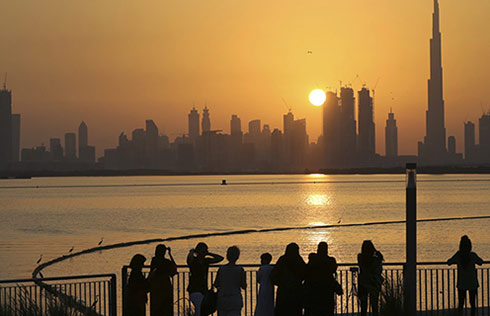A contrast next door
Compared to Hong Kong's troubled retailers, their counterparts in the neighboring Shenzhen are enjoying a growing market both online and offline.
Shenzhen's total retail sales of consumer goods in September reached about 48.59 billion yuan ($7.06 billion), up 7.8 percent over August, according to the city's statistics office.
Its data also show the figure has been growing over 8 percent month-on-month right through this year.
In comparison, Hong Kong retail sales have declined for 19 consecutive months to HK$33.8 billion ($4.36 billion) in September.
Liu Luyu, director of the Enterprise and Market Research Centre under the China Development Institute, a Shenzhen-based think tank, believes the burgeoning new consumption areas pushed Shenzhen into a whole new consumption era.
He said local people now like to pay for products they were unwilling to buy in the past, including information, high-end fashion and healthy food.
Local residents are evolving from basic to high-end consumption, he said.
As the city's economy continues to expand, the purchasing power of Shenzhen customers has been growing, said Neil Maffey, chief merchandizing officer of Sam's Club China, a high-end retailer in Walmart Inc.
The mainland's first Sam's Club opened in Shenzhen in 1996. In sales, it has topped the organization's units globally for eight consecutive years and is expected to retain the crown this year as well.
Maffey thinks Shenzhen shoppers are open to new things as it has fostered a more internationalized consumption market, as evidenced in surging sales of imported products.
Its online retail sales are growing even faster. On Singles Day of 2015, Shenzhen consumers spent 2.5 billion yuan, topping the city-wise national sales list.
This year, the sales record was broken in the first 12 hours of Nov 11 and Alibaba held its customary celebrity-enriched gala and countdown to the annual online festival in Shenzhen.

















